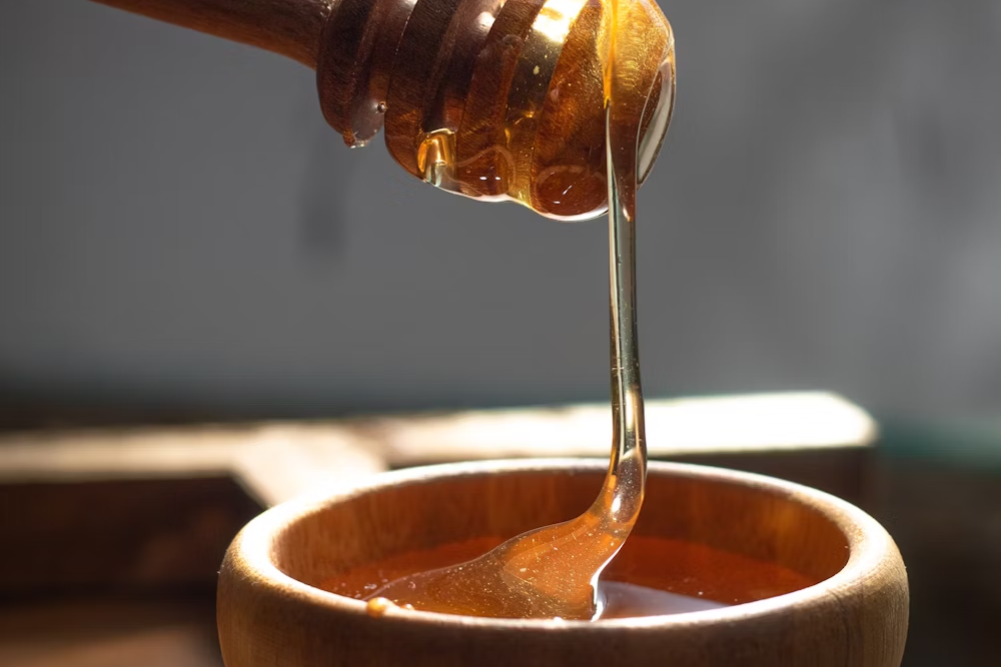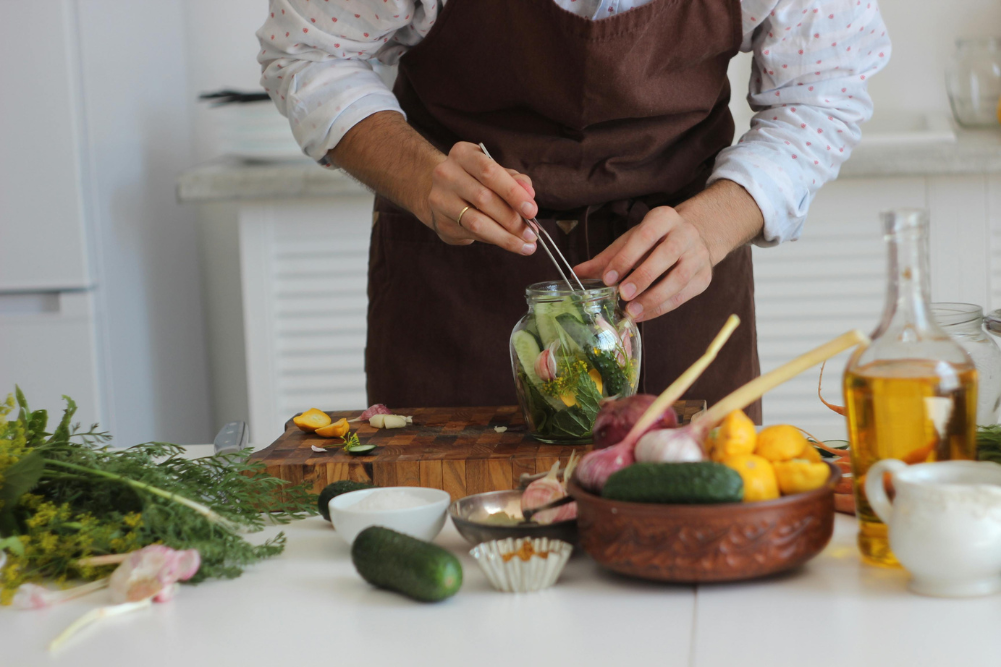The Power of prebiotics & probiotics
Probiotics and prebiotics are essential components of a healthy diet, offering a range of health benefits that extend far beyond good digestion. Probiotics are live microorganisms that, when consumed in adequate amounts, provide numerous health effects, including improved gut health, enhanced immune function and mental health, and relief from digestive disorders. Prebiotics, on the other hand, are types of dietary fibre that nourish these beneficial bacteria, promoting a balanced and thriving gut microbiome. This article explores the health benefits of both probiotics and prebiotics, highlights the top foods rich in these essential nutrients and provides some delicious and healthy recipes to help you incorporate them into your daily diet. Understanding the synergy between probiotics and prebiotics can transform your approach to wellness.
What are probiotics?
Probiotics are live microorganisms, primarily bacteria, that colonise the gut and contribute to a healthy gut microbiome. Within your gut reside trillions of these microorganisms, collectively forming a complex and vital ecosystem known as the microbiome. Probiotics enhance the population of these beneficial bacteria and influence the composition and activity of the gut microbiome.
Probiotic-rich sources
Probiotics are commonly found in fermented foods such as yoghurt with live cultures, kefir, sauerkraut, natto, kimchi, kvass, miso, tempeh, and kombucha. The fermenting process also boosts food digestibility and nutrient content. Some cheeses, typically cheese that has been aged but not heated, including cheddar, Parmesan, Swiss, gouda, Edam, cottage cheese and feta, provide some probiotics. Raw unfiltered apple cider vinegar will also provide some of these beneficial bacteria. Some other fermented foods such as sourdough bread and most commercial pickles are heated or processed after they are fermented so they don’t contain live cultures. Instead, look for unpasteurised fermented pickles in the refrigerated section of the grocery store. Probiotics must be consumed alive to have health benefits.
In modern times, the intake of naturally occurring probiotics has significantly decreased. Advances in food preservation techniques, such as refrigeration and pasteurisation, have reduced the need for traditional fermentation methods to preserve foods. As a result, many people today consume fewer fermented foods. The prevalence of processed and convenience foods, which lack live beneficial bacteria, has further contributed to the decline in probiotic consumption. Some delicious ways to incorporate more fermented foods into your daily diet include adding natural yoghurt to Bircher or natural muesli, smoothies or salad dressings. Coconut yoghurt is a good dairy-free alternative as a topping for healthy pancakes, scones and desserts. Tempeh makes a nutritious plant-based meat alternative in curries, grain bowls, salads, tacos, burgers and stir-fries. Natto, a traditional Japanese fermented soybean side dish, can be added to steamed rice, salads, vegetables, miso soup, cheese toasties or sushi. Kimchi, a spicy South Korean fermented cabbage and radish side dish, can be used to enhance rice dishes, tacos, savoury pancakes, fritters and scrambled eggs, or blended through tomato sauces.
Probiotic supplements
Probiotics are available as dietary supplements containing various strains and doses, measured in colony-forming units (CFU). Probiotic supplements are best taken on an empty stomach. A daily dose of 10- 20 billion CFUs is recommended for adults to maintain immune and digestive health, however higher doses of 50+ billion CFUs may be beneficial for individuals with significant alterations to their gut microbiome due to illness, antibiotics or lifestyle factors. Look for a high-quality probiotic supplement with “live and active cultures” on the label. Synbiotic dietary supplements contain both probiotics and prebiotics.
Probiotic health benefits
Health benefits can vary depending on the genera and species of a probiotic. Among species, different strains can also behave very differently in the gut and provide distinct health benefits. For example, Lactobacillus is a genus that includes various species such as Lactobacillus acidophilus or Lactobacillus casei. An example of a strain within the Lactobacillus acidophilus species is Lactobacillus acidophilus NCFM. The two main genera of probiotics that are most widely available in products and foods are Lactobacillus and Bifidobacterium. Other common probiotics include Saccharomyces, Streptococcus, Enterococcus, Escherichia and Bacillus.
Probiotics are best known for their role in promoting gut health and aiding digestion. They enhance the integrity of the intestinal barrier and rebalance the microbial community by displacing potentially pathogenic bacteria. Probiotics help reduce the incidence and severity of irritable bowel syndrome (IBS), and various forms of diarrhoea, including traveller’s and antibiotic-associated diarrhoea, and can help relieve constipation.
Probiotics have been shown to aid in the reduction of systemic inflammation including neuroinflammation and improvement of leaky gut. They can also help manage inflammatory bowel diseases, such as ulcerative colitis, and are useful in the treatment of inflammatory skin conditions, including eczema and acne.
Probiotics aid in immune system regulation and have been found to help prevent urinary tract infections and reduce the duration and severity of upper respiratory infections.
Certain probiotic strains have also been associated with positive effects on the brain, including improvements in mood, attention and memory. One study demonstrated that individuals who took the probiotic Lactobacillus plantarum experienced alleviation in anxiety and improvements in memory and cognition.
Studies have shown that certain probiotic strains can help regulate blood glucose levels, along with improving cholesterol profiles by reducing triglycerides and LDLs and raising beneficial HDLs, as well as contributing to a reduction in body fat.
What are prebiotics?
To ensure that beneficial bacteria thrive in the gut, you need to feed them prebiotic-rich foods. Prebiotics are non-digestible fibres that serve as food for beneficial bacteria in the gut, promoting their growth and activity. Soluble fibre and resistant starch are the main types of prebiotic fibre. These fibres pass through the stomach and small intestine untouched until they reach the large intestine where they are fermented by gut microbiome. The by-product of this fermentation process is the production of short-chain fatty acids (SCFA) such as butyrate and acetate. These SCFAs play an important role in promoting gut health. They encourage the growth of probiotics, reduce inflammation and maintain the integrity of the gut lining, and support immune function.
Prebiotic-rich sources
Soluble fibre is found in high amounts in certain grains (whole oats, brown rice, bran, barley), seeds (flaxseeds, chia seeds), legumes (soybeans, kidney beans, lentils, peas), nuts (pistachios, almonds, cashews), fruit (apples, kiwi fruit, grapefruit, blueberries), vegetables (Jerusalem artichokes, savoy cabbage, dandelion greens, garlic, onions, leeks, asparagus), cacao, chicory root and seaweed. Green bananas, cooked and cooled potatoes, oats, rice and pasta contain resistant starch. You can use cooked and cooled potatoes, rice or pasta in salads. Unripe green banana flour, commonly used in Jamaica and Africa, makes a nutritious gluten-free alternative to wheat flour for baked goods or as a sauce thickener.
8 top probiotic + prebiotic foods:
Sauerkraut: Sauerkraut is a type of fermented cabbage traditionally consumed in Eastern Europe and Germany that is rich in probiotics. Add a spoonful of sauerkraut to salads, sandwiches, wraps, tacos, scrambled eggs, curries and dahls. Choose raw, unpasteurised sauerkraut to get the full probiotic benefits or make sauerkraut at home.
Garlic: Garlic is rich in prebiotic fibres, making it an excellent food for supporting gut health. It contains inulin and fructooligosaccharides, which serve as nourishment for beneficial gut bacteria. Adding a good dose of garlic to dips, sauces, salad dressings and savoury dishes will not only add plenty of flavour, but it will also give them a boost in prebiotic goodness.
Legumes: Chickpeas, lentils, kidney beans and soybeans are naturally rich in galactooligosaccharides, a type of soluble prebiotic fibre. Legumes are a protein staple in many vegan and vegetarian dishes such as curries, nachos, salads, hummus, falafels, veggie patties and dahls. Legumes and legume flours can also be used in grain-free sweet treats such as cakes, brownies and cookies. Try chickpea cookies and kidney bean brownies.
Jerusalem artichokes: Globe artichokes benefit the gut microbiome as they contain a type of soluble fibre called inulin, which has prebiotic effects. Globe artichokes can be boiled, steamed, baked and marinated. They make a healthy addition to mezza plates, pasta dishes, pizzas, salads, and are delicious stuffed and baked. The steamed leaves make a tasty starter served with hummus, baba ghanoush or tzatziki.
Oats: Oats contain both resistant starch and a type of soluble fibre called beta-glucan, which has prebiotic properties, that nourish and support the growth of healthy bacteria in the gut. Oats are incredibly versatile and can be incorporated into healthy cakes, fruit crumbles, muesli bars and cookies for a delicious, gut-friendly dessert or nourishing treat. Make homemade granola, porridge or Bircher muesli and add a spoonful to smoothies. Oat flour makes a healthy alternative to wheat flour in baked goods.
Miso: Miso is a traditional Japanese fermented soybean paste, rich in probiotics that support gut health, enhance digestion and boost the immune system. Miso is made by fermenting soybeans with salt and a strain of bacteria called koji or Aspergillus oryzae, along with a grain such as rice, wheat or barley. Miso also contains prebiotic fibres that nourish and promote the growth of these beneficial gut bacteria. Look for an unpasteurised organic miso and be careful when cooking as these probiotics are killed off by prolonged cooking at high temperatures. Add your miso paste to dishes just before you take it off the heat to preserve its probiotic goodness. Miso is commonly used in miso soup but it can be used to give extra flavour and health benefits to a variety of dishes including sauces, salad dressings, marinades and glazes for fish, chicken and meat. Try adding some miso to your next pesto. Miso adds a lovely umami flavour to dishes such as stir-fries and noodles.
Green kiwifruit: Including green kiwifruit in the diet is an excellent way to boost your prebiotic intake. Rich in polyphenols, with proven prebiotic activity, kiwifruit helps promote the growth of beneficial gut flora. Add kiwi to Bircher muesli, porridge, granola, green smoothies, salads or as a yoghurt topper. Dehydrated kiwi makes a delicious addition to trail mixes and mueslis. Green kiwi powder is also available as a dietary supplement.
Kefir: Kefir is a nutrient-rich, fermented milk drink, which is packed with probiotics. Kefir is similar to yoghurt but with a tart, refreshing taste. Kefir has a long history in Russia and Eastern Europe, celebrated for its exceptional health benefits. Typically made from cow’s milk, kefir can also be produced using sheep, goat, coconut or soy milk. Enjoy kefir on its own, over porridge or muesli, in smoothies or as a tangy salad dressing.








